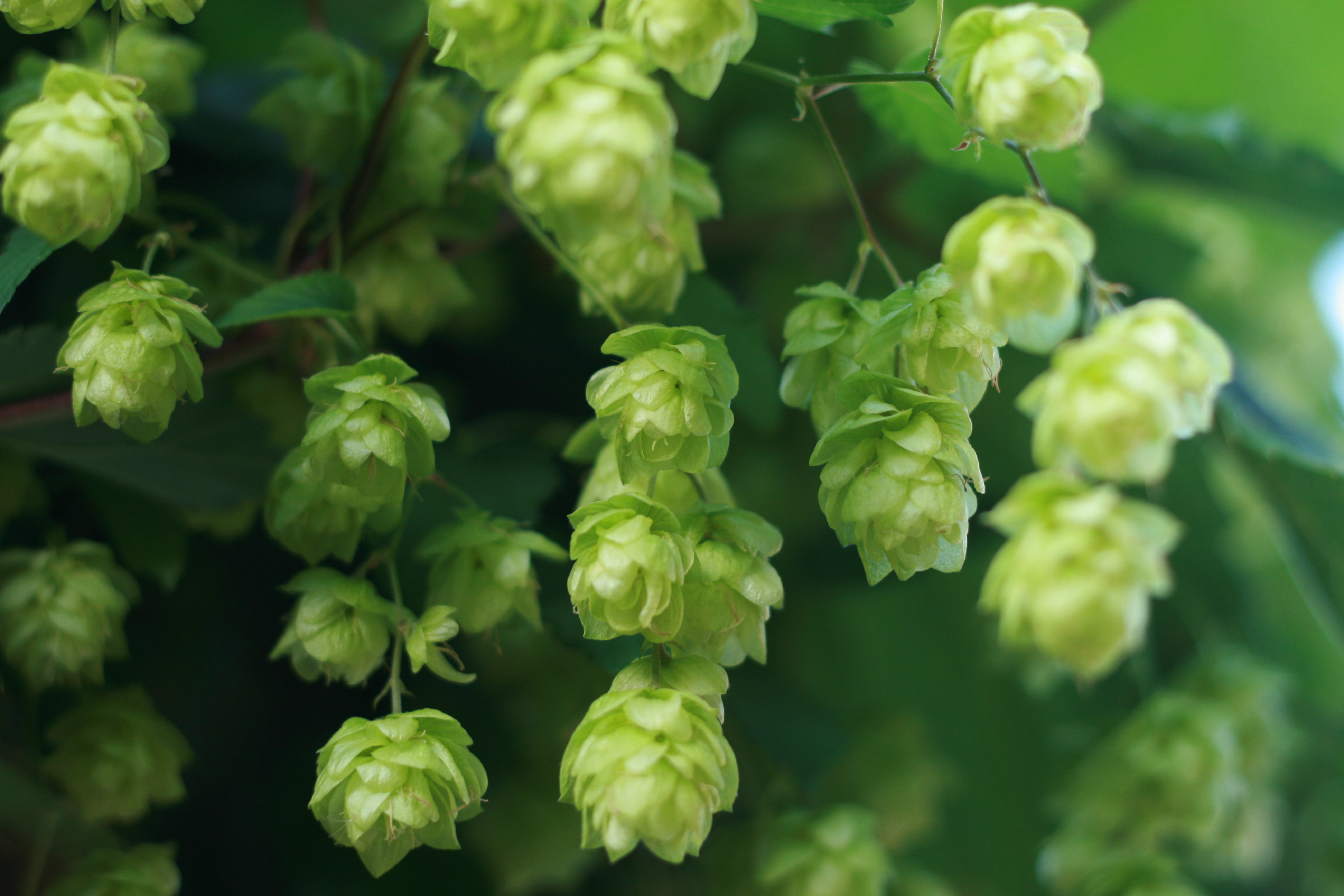Hops, Hops and More Hops
Every year in the late summer, hop farms around the world literally reap what they have sown when they harvest their vivid, green, hop crops. While most hops are grown in the U.S. and Europe, Brewbound reports that this year marked the second year where more hops were grown in the U.S. than anywhere else in the world…sorry, Germany! Furthermore, while just planting more acres of crops won’t necessarily lead to better harvests, this year’s crops were stellar, putting out quantity along with quality of flavor profile and aroma.
All About the Hops
Still wondering what a hop is, exactly? It’s a beautiful, green, climbing vine (or bine, a vine without tendrils) that produces a delicate flower. This flower or cone is full of resins that give beer flavors, aroma and act as a preservative. When they are added at the start of the brewing process they give the beer bitterness (IBUs), but then added at the end they give the beer a bright, hoppy aroma. For a place like San Diego that loves hoppy beers as much as we do, hops are king. With hops coming mostly from the U.S., Europe, New Zealand, Austrailia, and Japan, there is truly a wide variety available. Looking at info from 2013, the most popular hops varieties, in order, were Cascade, Centennial, Chinook, CTZ, Simcoe, Amarillo, Crystal, Willamette, CZ-Saaz, and US Golding.
U.S. Hop Production
There are more hops planted in the U.S. now than at any other time. In fact, hop production has grown by a full 50% since 2012. This year, the U.S. planted more hops than Germany (where the bulk of European hops are grown) with a record 52, 962 acres planted and 91.8 million pounds of hops harvested this year. U.S. hops include all the “Cs,” aka Cascade, Citra, Columbus and Chinook along with breweries favorites like Amarillo and Simcoe. Most of the U.S. hops are grown in Oregon, Washington, and Idaho.
While most of the hops are grown between the 35th and 50th parallels, it doesn’t mean that San Diego (32nd) doesn’t get in on the action too. Several varieties are grown on San Diego farms such as Glacier, Horizon, Cascade, and Chinook.
Hops take 3 years to reach their maturity, so farms offer up hop contracts to breweries that go years out so that there is stability within the industry and hops are a guaranteed source for a brewery.
Proprietary Hops
If you have never heard of a proprietary hop, then you are like most people. Proprietary hops include Simcoe, Amarillo, Citra, Warrier, CTZ and Ahtanum. This means the owner of the “invented” hops charge growers and suppliers a licensing fee or royalty payment to grow these styles. Although this makes these hops more expensive, it hasn’t stopped them from becoming some of the most popular hops to use at a brewery. Other hops cost more for different reasons. Nelson and Galaxy hops are not proprietary but they cost more because they are limited by geographic location (NZ and AU) as well as total yield. Hops from this region are known for adding flavors of tropical fruit, berries and lemon pepper to the brew.
What’s really neat is that there are lots of experimental hops being planted right now too. Hopsteiner, a farm in the Yakima Valley is working on hops that taste like creamsicles (orange and vanilla) and a variety that tastes like strawberry jam and red licorice.
One of the great things about the craft beer community is that if a brewery is running low on a specific hop that they need for a brew, often times, they can trade hops with another local brewery to get what is needed for the recipe. So let’s celebrate the amazing year that U.S. hops is having with a pint of something hoppy!


good stuff!